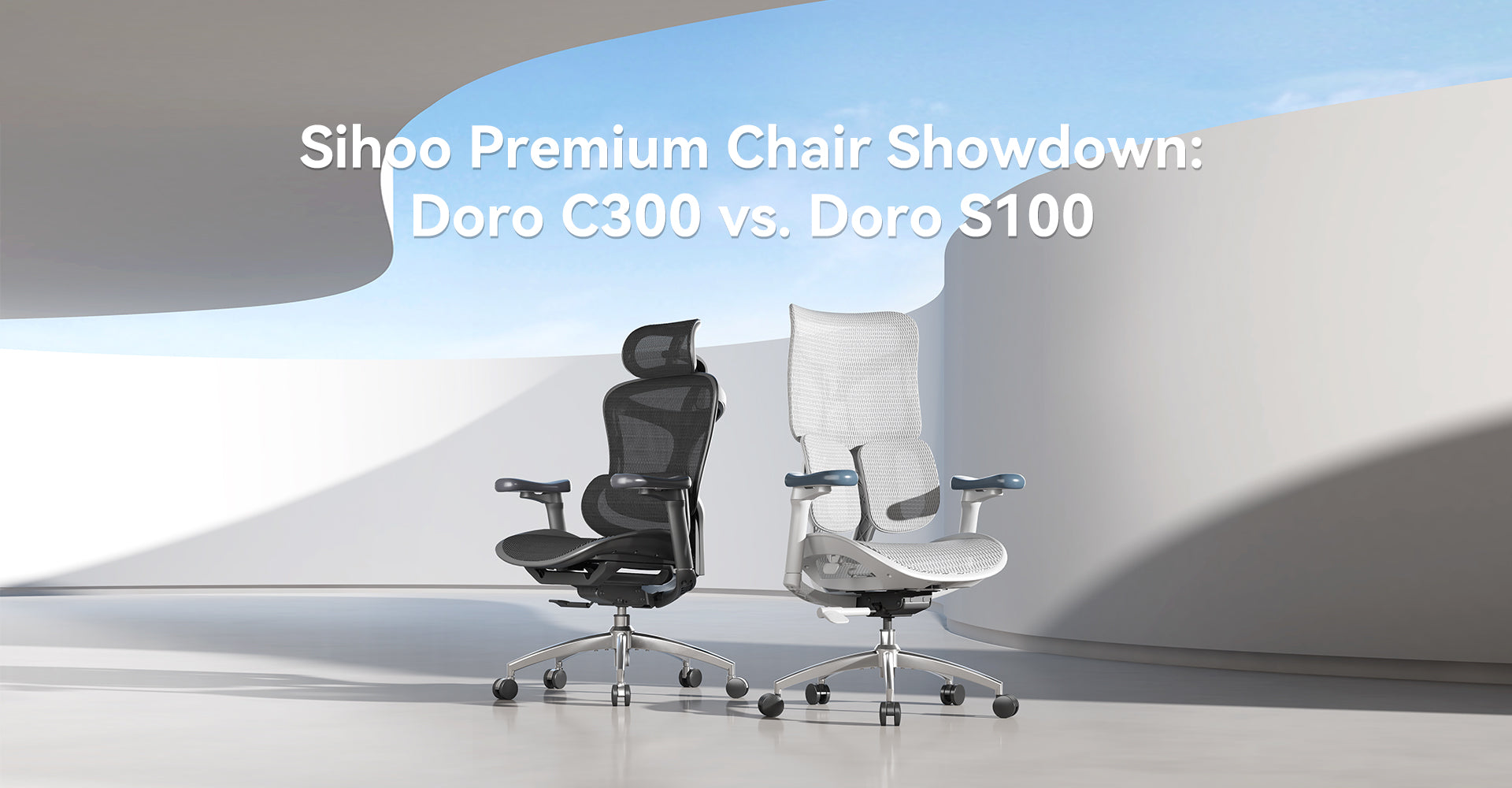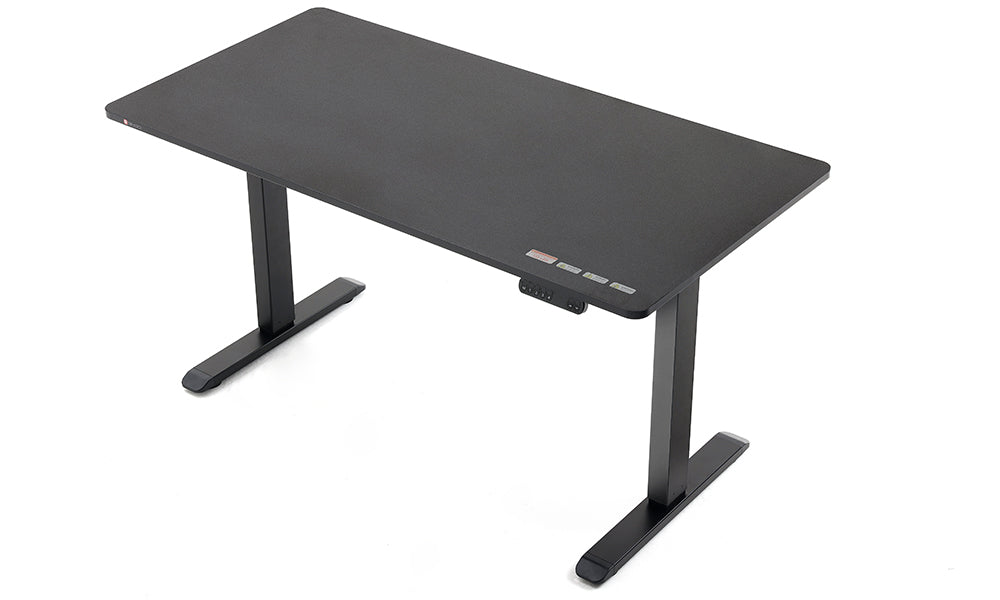In recent years, the office landscape has undergone a significant transformation. With growing awareness about the health implications of prolonged sitting, standing desks have surged in popularity. These ergonomic workstations are touted for their ability to reduce the risks associated with a sedentary lifestyle, such as back pain, obesity, and cardiovascular diseases. But a common question arises for those considering this transition: Can you have a standing desk and also sit down? The answer is a resounding yes, and in fact, it's highly recommended. This blog will explore the benefits of using a standing desk, how to integrate sitting into your routine, and tips for creating a balanced, flexible workspace.
The Rise of Standing Desks
Standing desks, also known as stand-up desks, allow users to work while standing up rather than sitting in a chair. This concept isn't new; notable historical figures like Leonardo da Vinci, Winston Churchill, and Thomas Jefferson were known to work while standing. However, the modern resurgence is driven by scientific research linking prolonged sitting to various health issues.
Health Benefits of Standing Desks:
- Reduced Risk of Obesity and Weight Gain: Standing burns more calories than sitting. By standing for part of the day, you can increase your daily caloric expenditure.
- Lower Blood Sugar Levels: Studies have shown that standing after meals can reduce blood sugar levels, which is particularly beneficial for people with insulin resistance or type 2 diabetes.
- Decreased Risk of Heart Disease: Prolonged sitting has been linked to an increased risk of heart disease. Standing more frequently helps mitigate this risk.
- Reduced Back Pain: Many users report a significant reduction in chronic back pain after switching to a standing desk.
- Improved Mood and Energy Levels: Standing desks can enhance overall mood and energy, potentially leading to increased productivity.
Integrating Sitting into a Standing Desk Routine
While standing desks offer numerous benefits, it's essential to strike a balance between standing and sitting. Prolonged standing can also lead to discomfort and health issues, such as leg cramps, varicose veins, and fatigue. Therefore, the key is to find a harmonious balance that incorporates both positions.
Benefits of Alternating Between Standing and Sitting:
- Ergonomic Flexibility: Alternating between sitting and standing can help you find the most ergonomic positions for different tasks, reducing the risk of musculoskeletal problems.
- Increased Productivity: Switching between positions can prevent fatigue and maintain energy levels throughout the day, leading to sustained productivity.
- Improved Circulation: Movement between sitting and standing promotes better blood flow, reducing the risks associated with both prolonged sitting and standing.
- Mental Health Benefits: Changing postures can alleviate mental fatigue and improve focus, providing a mental break that can boost creativity and problem-solving.
Tips for an Effective Sit-Stand Workstation
- Invest in an Adjustable Desk: The most practical solution for integrating sitting and standing is an adjustable desk. These desks can be easily raised or lowered, allowing you to switch between positions seamlessly. Electric models are particularly convenient as they can adjust heights at the push of a button.
- Use a Sit-Stand Timer: To ensure you maintain a healthy balance, consider using a sit-stand timer. This tool reminds you to change positions at regular intervals. A common recommendation is the 30-30 rule: stand for 30 minutes, then sit for 30 minutes.
- Ergonomic Chair: When sitting, use an ergonomic chair that supports your back and encourages good posture. Look for chairs with adjustable height, lumbar support, and comfortable cushioning.
- Anti-Fatigue Mat: If you plan to stand for extended periods, an anti-fatigue mat can provide cushioning and support, reducing the strain on your legs and feet.
- Proper Desk Setup: Whether sitting or standing, ensure your desk setup promotes good posture. Your computer screen should be at eye level, and your keyboard and mouse should be positioned to keep your wrists straight.
- Footwear: Wear comfortable, supportive shoes if you’re standing for long periods. High heels or unsupportive footwear can lead to discomfort and health issues.
- Take Breaks: Regardless of whether you're sitting or standing, taking regular breaks to move around, stretch, and rest your eyes is crucial. Aim for a 5-10 minute break every hour.
- Listen to Your Body: Pay attention to how your body feels. If you experience discomfort or fatigue, adjust your posture or take a break. Everyone's body is different, and finding the right balance is a personal journey.
Creating a Dynamic Workspace
The goal of incorporating a standing desk into your routine is to create a dynamic workspace that promotes movement and flexibility. Here are some additional tips to enhance your work environment:
- Incorporate Movement: Use opportunities to move throughout the day. Take phone calls while standing or walking, and consider walking meetings for discussions that don't require a desk.
- Stretching Exercises: Incorporate stretching exercises into your routine to alleviate muscle tension and improve flexibility. Simple stretches can be done at your desk and take only a few minutes.
- Monitor Position: Ensure your monitor is adjustable so you can maintain a comfortable viewing angle whether sitting or standing. This helps reduce neck and eye strain.
- Desk Accessories: Use desk accessories like a monitor stand, keyboard tray, or laptop stand to maintain an ergonomic setup in both sitting and standing positions.
- Personalize Your Space: Make your workspace inviting and comfortable. Add personal touches like plants, photos, or motivational quotes to create a positive work environment.
Conclusion
The versatility of a standing desk offers a myriad of benefits, from improving physical health to boosting productivity and mental well-being. However, the key to maximizing these benefits lies in balancing standing with sitting. By integrating both positions into your work routine, you can create a dynamic, ergonomic, and comfortable workspace that supports your overall health and productivity.
Remember, the journey to finding the perfect balance between sitting and standing is personal and unique. Pay attention to your body's signals, make necessary adjustments, and enjoy the benefits of a more active and health-conscious work environment. With the right approach, you can truly have the best of both worlds: a standing desk that allows you to sit down when needed.






Laisser un commentaire
Ce site est protégé par hCaptcha, et la Politique de confidentialité et les Conditions de service de hCaptcha s’appliquent.